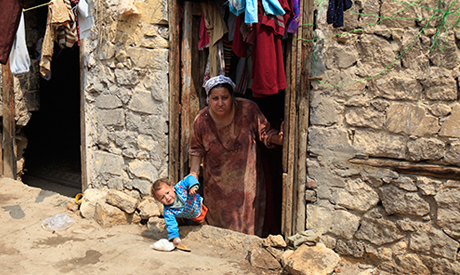
A woman carries her baby in front of her home at the El'Arafa necropolis, a cemetery located in the City of the Dead, in Cairo (Photo: Reuters)
Growth forecasts for seven countries in the Middle East and North Africa might be too rosy and consequently misleading according a World Bank report.
“There is a risk of policy error in trusting economic forecasts that paint a positive outlook for their economies as policymakers resist needed reforms,” said Lili Mottaghi, World Bank MENA Economist and the author of the brief.
The report, entitled "Predictions, Perceptions and Economic Reality Challenges of Seven Middle East and North Africa Countries Described in 14 Charts," warns policymakers in the region of the consequences of predictions which are overoptimistic, especially considering the instability that has followed many of the 2011 uprisings in the region.
Government as well as international institution predictions made in 2010 for 2011-13 also proved to be overoptimistic.
"The 2011 uprisings highlighted the limitations of growth forecasts. They neither recognised the alarming signs nor accounted for structural breaks and exogenous shocks,” highlights the report.
Its authors advise political leadership in the seven concerned countries of Egypt, Tunisia, Iran, Lebanon, Jordan, Yemen and Libya to "cautiously interpret" the forecast for economic recovery in 2014-15.
"Although some structural breaks cannot be predicted at all, it is important for forecasters to spot the alarming signs as they happen."
The problem is that forecasts do not very often take into account "new information that comes in at the last minute, nor the structural breaks that sometimes drive an economy".
The report enumerates several structural problems that have hit the region including an increase in the fiscal deficit, decreased foreign reserves, high unemployment levels (especially among educated people), corruption and favoritism, a weak private sector unable to generate jobs, a widespread informal sector and an important part of the population who live near the poverty line.
Short link: